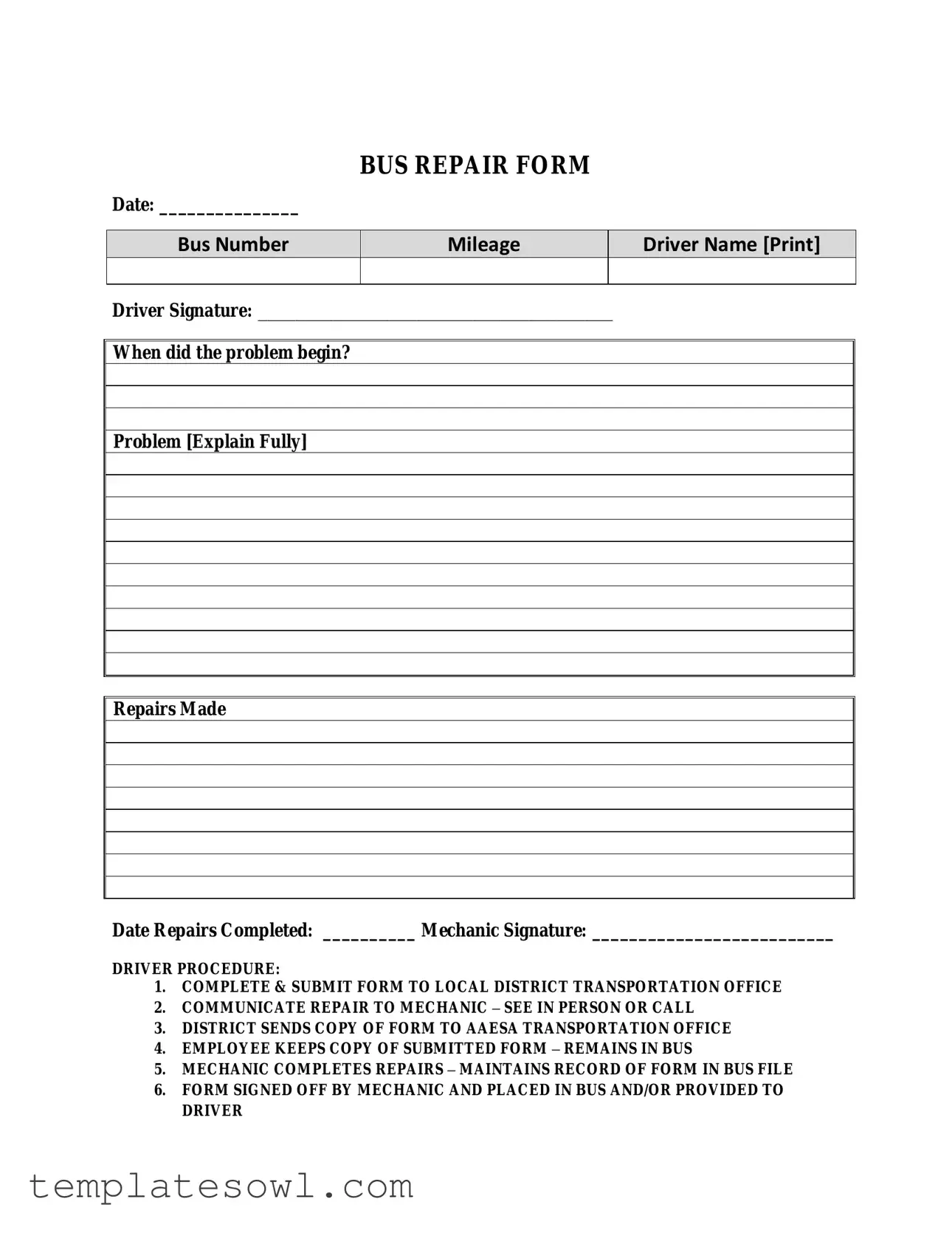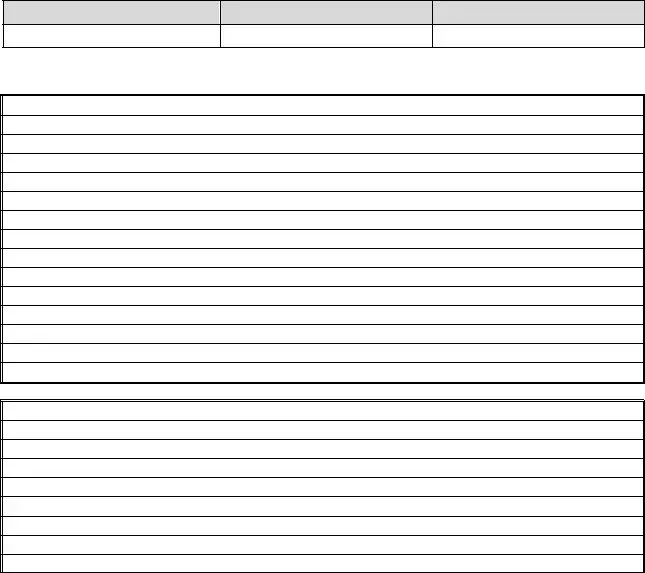What is the purpose of the Bus Repair form?
The Bus Repair form is designed to document any issues encountered with a bus, detailing the problem, repairs needed, and the completion of those repairs. This form serves as a formal record for both drivers and mechanics, ensuring that all necessary repairs are communicated clearly and tracked efficiently.
What information is collected on the Bus Repair form?
The form collects specific details such as the date, bus number, mileage, the driver’s name and signature, when the problem began, and a detailed explanation of the issue. It also requires the mechanic to note the date repairs were completed and provide their signature upon finishing the repairs.
What steps should a driver follow when completing the form?
Drivers should fill out the form completely, ensuring that all sections are accurately filled in. After completion, drivers must submit the form to their local district transportation office. It is also important for drivers to communicate the issue directly to the mechanic, either in person or by phone.
Who receives a copy of the Bus Repair form?
After the driver submits the form, the district transportation office sends a copy to the AAESA Transportation Office. Additionally, the driver keeps a copy of the submitted form, which should remain in the bus for future reference.
What happens after a mechanic completes the repairs?
Once repairs are completed, the mechanic maintains a record of the form in the bus's file. The mechanic also signs off on the form, indicating that the repairs have been made and prescribing that the form is either placed back in the bus or provided to the driver for their records.
How does the documentation on the form support maintenance protocols?
Documentation on the Bus Repair form supports maintenance protocols by providing a clear and systematic way to track vehicle issues and repairs. This record allows for better resource allocation, ensures accountability, and aids in the monitoring of the vehicle's condition over time.
Can a driver submit the form electronically?
The submission process for the Bus Repair form may vary by district. Drivers should check with their local transportation office to determine if electronic submission is permitted or if a physical copy is necessary.
What should a driver do if they notice a recurring problem with a bus?
If a driver observes a recurring issue, they should document each occurrence on a separate Bus Repair form. Communication with the mechanic is crucial, as they may need to investigate further or implement more comprehensive repairs to address the underlying problem effectively.
Is there a specific timeline for submitting the Bus Repair form?
While a specific timeline may not be stated, it is advisable for drivers to complete and submit the Bus Repair form as soon as they notice a problem. Timely submission helps ensure that issues are addressed promptly, minimizing the risk of further complications or safety concerns.

